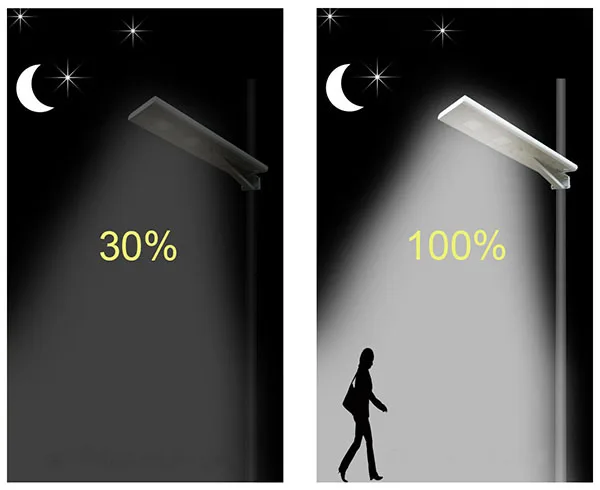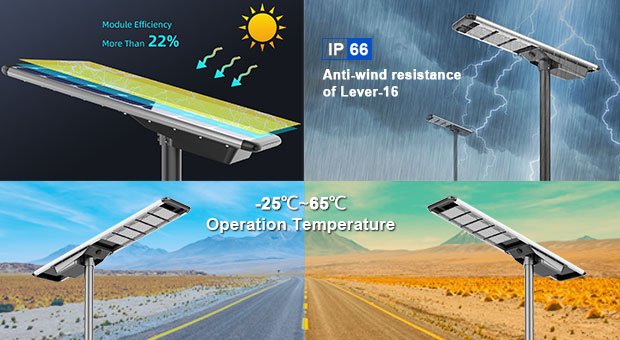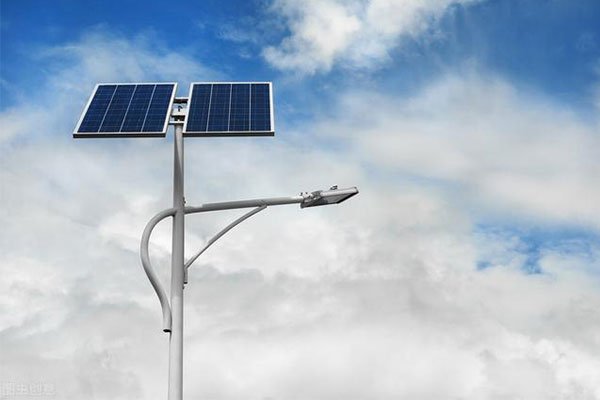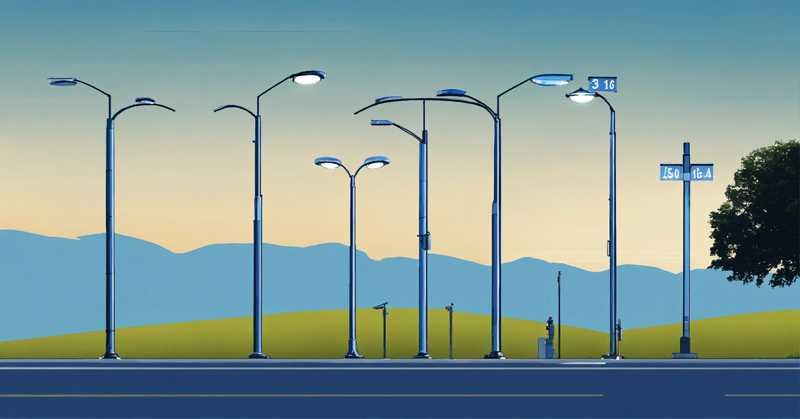Installing integrated solar street lights seems straightforward, but small mistakes can lead to inefficiency and costly repairs. Many installers unknowingly make avoidable errors that reduce the system's performance.
To ensure long-term reliability and efficiency, avoid these five common mistakes: improper placement, incorrect battery setup, poor wiring, wrong panel angle, and lack of maintenance. Fixing these issues upfront saves time, money, and energy.
A small installation mistake can lead to reduced light output, battery failure, or system inefficiency. Let's explore these five common mistakes and how to avoid them.
1. Improper Placement: Are You Positioning the Light Correctly?
If the solar panel is placed in a shaded area, energy generation will drop significantly. Even small obstructions like tree branches can affect efficiency.
Why Proper Placement Matters
A solar street light needs direct sunlight for maximum efficiency. Incorrect placement can cause poor charging, resulting in dim lighting or shorter operation hours.
How to Avoid This Mistake
- Check for Shadows – Place the panel where it gets direct sunlight throughout the day.
- Avoid Nearby Obstacles – Trees, buildings, or poles should not block sunlight.
- Consider Seasonal Changes – The sun's position changes during the year. Ensure placement accounts for variations.
2. Incorrect Battery Setup: Are You Using the Battery Properly?

If the battery is installed incorrectly or exposed to extreme temperatures, it can degrade quickly, reducing the lifespan of the solar street light.
Why Battery Setup Is Crucial
A faulty battery connection or exposure to heat and cold can lead to power failures. This shortens the battery’s life and increases replacement costs.
Best Practices for Battery Installation
- Follow Manufacturer Guidelines – Ensure proper wiring and secure connections.
- Use High-Quality Batteries – Choose batteries with a good charge cycle.
- Avoid Extreme Temperatures – Install batteries in a protected location to prevent overheating or freezing.
3. Poor Wiring: Are You Ensuring Proper Electrical Connections?
Loose or exposed wires can cause malfunctions, short circuits, or even fire hazards, reducing the lifespan of the lighting system.
Why Wiring Mistakes Are Dangerous
Incorrect wiring can lead to energy losses, water damage, or complete failure of the light. Poorly connected wires also increase the risk of electric shock.
How to Prevent Wiring Issues
- Use Proper Insulation – Protect wires with waterproof insulation.
- Ensure Secure Connections – Loose wires lead to inefficiencies and potential hazards.
- Perform Regular Inspections – Check for wear, corrosion, or exposed wires.
4. Wrong Panel Angle: Are You Maximizing Sunlight Exposure?
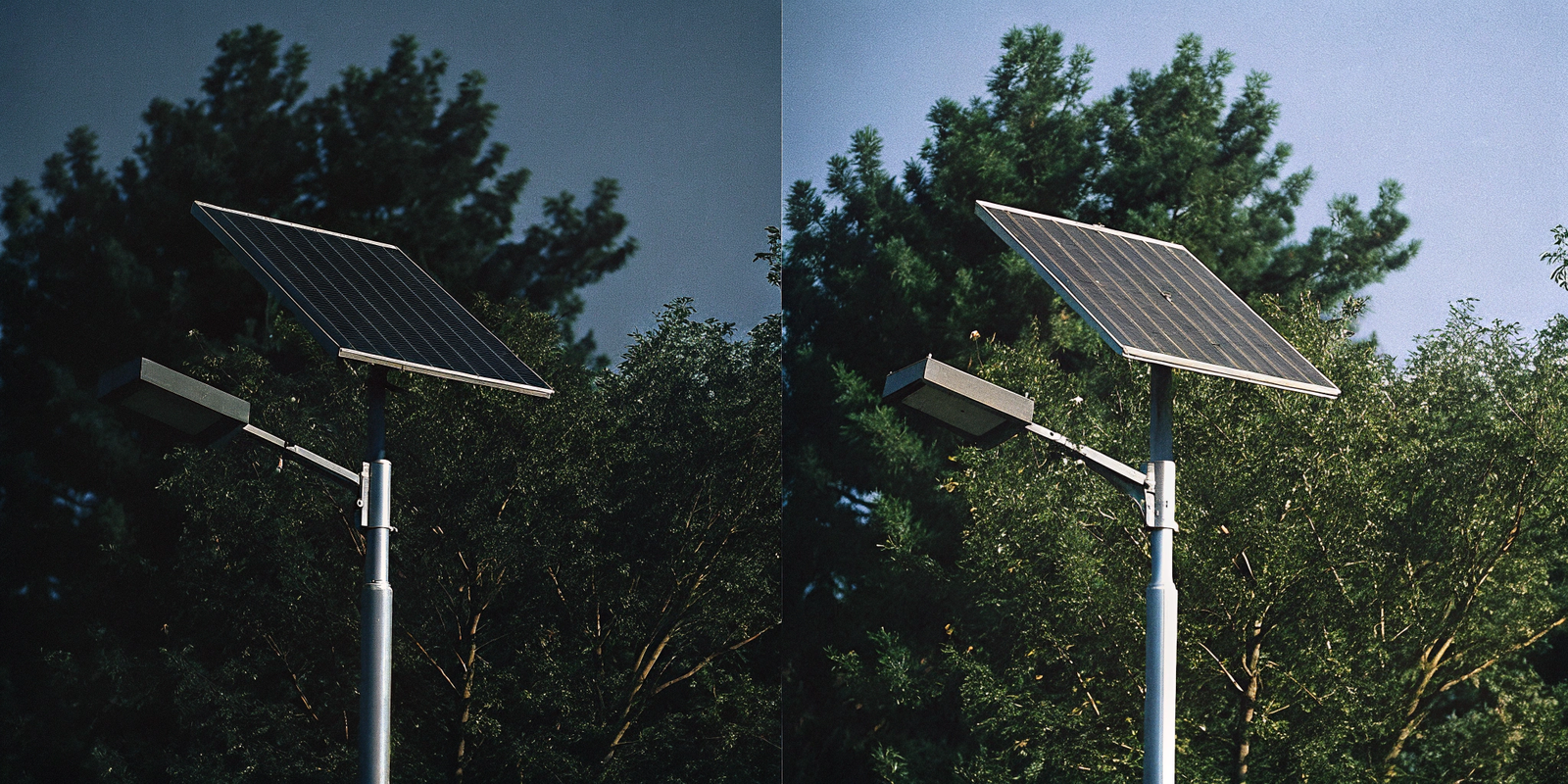
If the panel angle is incorrect, the solar street light will not receive enough sunlight, leading to insufficient energy storage.
The Importance of Panel Angle
Solar panels need to be adjusted based on geographic location to absorb the most sunlight. A bad angle reduces efficiency and shortens lighting hours.
Correcting the Panel Angle
- Check the Latitude Angle – The best tilt angle equals the local latitude for year-round efficiency.
- Adjust Seasonally – Some installations require seasonal angle adjustments.
- Ensure Secure Mounting – A weak mount can shift over time, reducing efficiency.
5. Lack of Maintenance: Are You Ignoring Regular Checkups?
Without proper maintenance, dirt, dust, and weather conditions can damage components, leading to failures and costly replacements.
Why Maintenance Matters
Dirt on solar panels reduces energy absorption, while unchecked wiring or batteries can degrade over time. Regular maintenance ensures long-term performance.
Maintenance Best Practices
- Clean Solar Panels Monthly – Remove dust and debris for optimal performance.
- Check for Damaged Parts – Look for broken LEDs, loose connections, or corrosion.
- Monitor Battery Performance – Replace weak batteries before they fail.

Conclusion
Avoiding these five common mistakes will ensure that integrated solar street lights function efficiently and last longer. Proper placement, correct battery setup, secure wiring, optimized panel angles, and regular maintenance are key factors for a successful installation. Investing time in correct installation prevents future issues, saving costs and enhancing street lighting performance.


